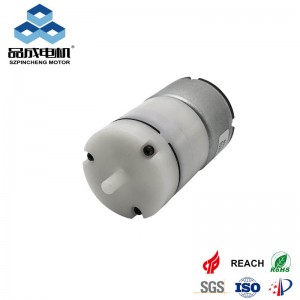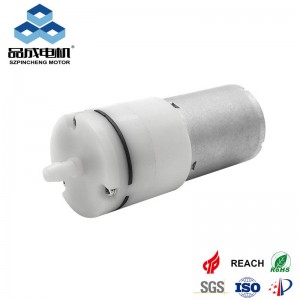When faced with the need to oxygenate water—whether for a small fish tank, a desktop hydroponic system, or a mini aquatic experiment—many people first think of “no-pump” methods like surface stirring or aquatic plants. While these approaches work in limited cases, they often fall short of providing consistent, reliable oxygen levels. This is where a micro air pump becomes a game-changer: compact, efficient, and versatile, it fills the gaps left by other methods, making it indispensable for anyone working with small-scale water systems. Even more critical is the micro air pump 3v—a low-voltage variant that excels in portability and energy efficiency, perfect for off-grid or space-constrained setups.
Common “No-Pump” Oxygenation Methods: Their Limits
Before diving into why micro air pumps are essential, let’s first address the most popular “without an air pump” techniques and their drawbacks. These methods may work for temporary or ultra-small setups, but they cannot replace the consistency of a micro air pump:
1、Surface Agitation (Stirring or Splashing)
Manually stirring water with a spoon or tilting a filter outlet to create ripples increases contact between water and air, allowing oxygen to dissolve. However, this method is labor-intensive (you can’t stir 24/7) and inconsistent—oxygen levels drop quickly once stirring stops. For tanks larger than 2-3 liters (e.g., a 5L betta tank), surface agitation alone fails to maintain the oxygen levels fish need to thrive.
2、Aquatic Plants (Photosynthesis)
Plants release oxygen during the day via photosynthesis, which seems like a “natural” solution. But at night, plants reverse this process and consume oxygen—putting fish at risk of hypoxia (low oxygen) after dark. Additionally, small setups (like a 10cm desktop jar) rarely have enough space for plants to produce sufficient oxygen, making this method unreliable as a sole source.
3、Partial Water Changes
Fresh, dechlorinated water has higher dissolved oxygen than stale water, so replacing 10-20% of the water can give a temporary boost. But this is a short-term fix: oxygen levels will decline within hours, and frequent water changes stress fish or disrupt hydroponic root systems.
Why Micro Air Pump Is Indispensable for Small-Scale Water Oxygenation
A micro air pump is not just a “better alternative”—it’s a necessity for anyone who needs stable, low-maintenance oxygenation without a full-sized air pump. Here’s why it stands out:
1. Compact Size, Big Impact
Unlike bulky traditional air pumps (which are too large for 5-20L tanks or mini hydroponic kits), micro air pumps are designed to fit in tight spaces. Most are smaller than a deck of cards, weighing just 50-100 grams—perfect for desktop fish tanks, propagation trays, or travel-sized aquatic setups (e.g., a camping mini-aquarium for bettas). Despite their size, they deliver a steady flow of air (typically 0.5-2L/min) that’s calibrated for small volumes, ensuring oxygen levels stay within the safe range (5-8 mg/L for most fish).
2. Consistent Oxygen, 24/7
Unlike manual stirring or plant-based oxygenation, a micro air pump runs continuously (with minimal noise—usually under 30dB) to maintain stable oxygen levels day and night. This is critical for sensitive aquatic life: even a 1-hour drop in oxygen can cause fish to floating head (gasp at the surface) or weaken their immune systems. For hydroponic growers, consistent oxygen is equally vital—root rot often occurs when oxygen levels dip below 4 mg/L, and a micro air pump prevents this by aerating nutrient solutions nonstop.
3. The Micro Air Pump 3V: Portability & Energy Efficiency
For setups without access to a power outlet (e.g., outdoor hydroponic gardens, emergency fish tank care during power outages), the micro air pump 3v is a lifesaver. This low-voltage variant runs on 2 AA batteries or a small USB power bank, eliminating the need for AC power. Its energy efficiency is unmatched: a single set of batteries can power it for 3-5 days, making it ideal for off-grid use. For example, if you’re transporting a small fish tank to a new home, a micro air pump 3v ensures your fish have oxygen during the trip—something no manual method can do reliably.
4. Easy to Install & Versatile
Micro air pumps require no complex setup: simply attach a small air stone (to disperse air into fine bubbles, maximizing oxygen absorption) and a short tube, then place the pump near the water source. They work with all small-scale systems:
- Small fish tanks (5-30L): Keeps bettas, guppies, or shrimp healthy.
- Hydroponics: Aerates nutrient water for herbs like basil or lettuce.
- Aquatic experiments: Maintains oxygen levels for school science projects.
- Mini ponds: Prevents algae overgrowth by improving water circulation.
Real-World Example: Why a Micro Air Pump Beat “No-Pump” Methods
Consider a beginner who sets up a 10L tank for 2 neon tetras. They first try surface agitation with a small filter, but notice the fish gasp at night. They add a small aquatic plant, but the plant is too small to produce enough oxygen. Finally, they install a micro air pump—within 24 hours, the fish stop gasping, and water clarity improves (since better oxygenation reduces harmful bacteria). Later, when they go on a weekend trip, they switch to a micro air pump 3v powered by a USB battery pack—their fish stay healthy, and they avoid the stress of asking a neighbor to do water changes.
Conclusion: Micro Air Pump Is Non-Negotiable for Reliable Oxygenation
While “no-pump” methods like stirring or plants can help in a pinch, they cannot provide the consistency, convenience, or safety that a micro air pump offers—especially for small-scale water systems. Whether you’re a hobbyist with a desktop fish tank, a hydroponic grower, or someone needing portable oxygenation, a micro air pump is an indispensable tool. And for off-grid or low-power setups, the micro air pump 3v takes this necessity a step further, combining portability with efficiency.
If you want to keep your aquatic life healthy or your hydroponic plants thriving, don’t rely on temporary fixes—invest in a high-quality micro air pump. It’s a small device that delivers big results, ensuring your water stays oxygen-rich when you need it most.
you like also all
Read More News
Post time: Sep-22-2025




